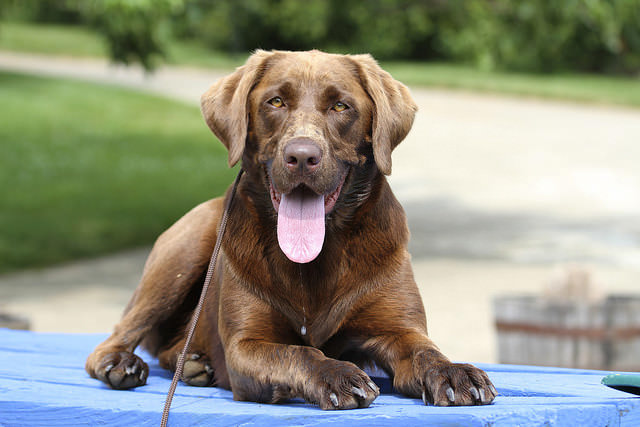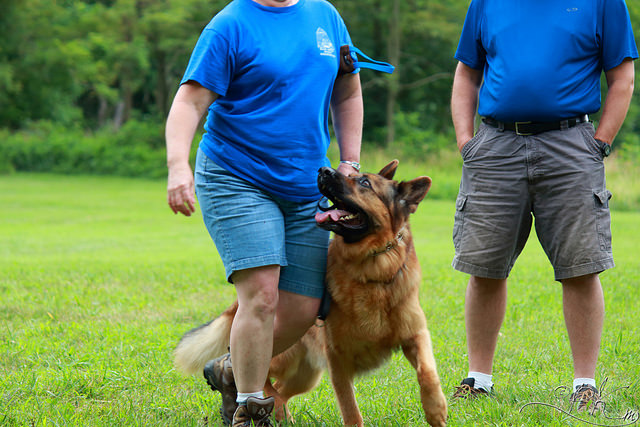It’s very easy to get excited about training your new dog or puppy, especially if you’re training for some sort of performance. Competitive obedience, agility and many other venues take a lot of time and effort, and the beginning stages of training are often some of the best moments for owners because they offer such a great way to bond with their new canine companions. But research has found that too much training is actually detrimental to our dogs’ learning process. Psychology Today reports a recent study on training headed by Anna Kis of the Institute of Cognitive Neuroscience and Psychology at the Hungarian Academy of Sciences in Budapest, Hungary.
Kis and her colleagues wanted to determine whether rest after a training session resulted in better retained long-term memory of learned tasks, rather than if a dog was asked to learn a new task immediately following the first. According to Psychology Today, “If a memory is to be useful in guiding behaviors after the training session ends it has to be processed and stored in the brain in what psychologists call long-term memory. The process by which short-term memories are converted to long-term memories is called ‘consolidation.’ Data has shown that getting some sleep after learning something can greatly improve consolidation. This is because it is during the REM or dream state of sleeping that memories are sorted through and finally stored in our long-term or permanent memory.” Therefore, the idea was that if dogs took a nap after a training session, they would better retain the new behavior they had learned.

To test this theory, the team first had to establish that the process of being trained actually has effects on what happens while a dog is sleeping afterwards. To do so, they simply took a group of dogs and asked them to respond to a new command for a behavior they already knew. In this case, the dogs knew how to sit or lie down under the Hungarian command. For their new task, they were asked to sit or lie down using the English command. After the training session, the dogs took a three hour nap during which their brain waves were recorded. Their electrical patterns were compared to a group of dogs that had practiced the behaviors in Hungarian without learning a new command, and the results showed a significant difference. The researchers felt that the increased activity in the group that learned something new was due to their brains consolidating what they’d been taught into long-term memory.
The next experiment was a little more complicated. The researchers needed to test whether dogs that took a nap after learning one task retained that information better than dogs who were taught one task and then immediately taught a second task in a single training session – the way many dogs are trained today. They also decided to see if having an exercise break or a relaxed play session after learning the task made a difference in their ability to consolidate the memory.

Using the same training model used before (learning an English command for a behavior they knew well with a Hungarian command), a group of 53 pet dogs were studied in the experiment. One group learned the task and got to take a one hour nap in the car afterwards. The second group immediately learned a new task after the first. The third took a walk around the campus and the fourth group played with a Kong toy stuffed with treats. Although the researchers expected the dogs with the nap to perform better than the other groups, this was not the case. In fact, when they were all retested an hour later, all of the dogs in the groups performed at the same level they did in the beginning.
However, the researchers recognized that the effects of memory consolidation often take time to show up (something dog trainers call “latent learning”). Because of this, they opted to test all of the dogs again in one week without any additional training sessions. As expected, the group that was able to nap performed much better than the group that immediately learned a new task after the first. What surprised the researchers, however, is that the group that took a walk and the group that played with the Kong after performed just as well as the dogs that took a nap.

In other words, it appears that the second training session immediately after the first actually interferes with the consolidation process for the earlier learned tasks. Psychology Today puts it this way: “To see why this might be the case you might imagine that there is a narrow gateway through which the short-term memories from training into long-term memory must pass in order to get to the long-term storage. If you fill that narrow gateway with too many new memories which need to be consolidated you get a log jam. That means that the processing of some of the short-term memories established during training will be slowed meaning that they will fade before they get a chance to be consolidated into a more permanent form.”
The obvious result is that dogs need a break after learning a task, the same way children need a recess in school. Anything that helps the dogs relax and doesn’t interfere with the consolidation process is going to be beneficial to training. Although many trainers promote back to back training sessions for dogs, research is showing that this might not be the most effective way to teach new behaviors. We can all agree that training is useless if the dog is unable to retain anything he or she has learned, so this hopefully brings to light the importance of letting your dog recover from the mental stimulation of learning and allow you to bond in other ways.
